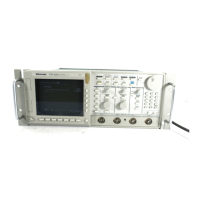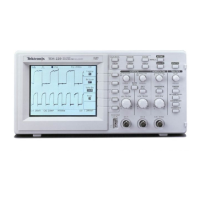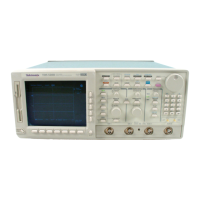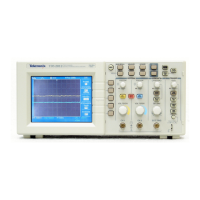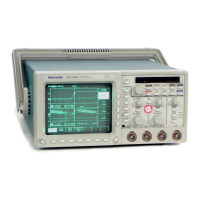Appendix B: Algorithms
B–10
TDS 684A, TDS 744A, & TDS 784A User Manual
# =
" ## * " ##"$
"
If the target waveform leads the reference waveform, phase is positive; if it lags,
negative.
Phase is not available in the Snapshot display.
Timing measurement. The ratio of the positive pulse width to the signal period,
expressed as a percentage.
#$&$ is defined in Positive Width, following.
If " = 0 or undefined then return an error.
#$&%$)) =
#$&$
"
%
Amplitude (voltage) measurement.
#$&&"# $ =
( *
!$%
%
Note that this value should never be negative.
Timing measurement. The distance (time) between (default = 50%)
amplitude points of a positive pulse.
If " ## "$) = ‘+’
then
#$&$ = " ## – " ##
else
#$&$ = " ## – " ##
Timing measurement. Time taken for the leading edge of a pulse to rise from a
' value (default = 10%) to a value (default = 90%).
Figure B–3 shows a rising edge with the two crossings necessary to calculate a
Rise Time measurement.
1. Searching from $"$ to , find the first sample in the measurement zone
less than '.
Positive Duty Cycle
Positive Overshoot
Positive Width
Rise Time
